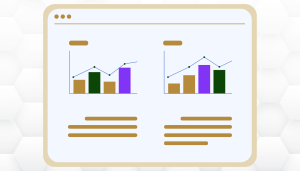
Share
The Best Last-Minute Sales Trick For Black Friday & Cyber Monday
The first recorded use of the term “Black Friday” was used not to describe crazed holiday shopping but to describe what at the time was one of the most crushing financial crises in U.S. history. During the crash of the U.S. gold market on September 24, 1869, the term was first dubbed in history “Black Friday”. A depressing day.
The Black Friday we know and love could also be described as depressing, but likely for different reasons. For example, it could have something to do with sustaining an injury while fighting over a flat screen TV. Or waiting in line for so long in the cold that your toes get frostbite.
It wasn’t until 1961 that “Black Friday” finally caught on as a term for shopping the day after Thanksgiving; that was in Philadelphia. Many retailers described the day after Thanksgiving as a shopping date that turned net profits from negative (in the “red”) to positive (in the “black”). So Black Friday was born. And then, by the 1980s it was firmly established across the country.
It’s a bit easier to pinpoint the history of Black Friday’s digital twin Cyber Monday, which began in 2005.
Black Friday and Cyber Monday have essentially become a week-long (or more) celebration of consumerism. There’s seemingly no clear start or end to the festivities and promotions that extend even beyond the specific dates of those two major sales days.
However, that being said, from an affiliate marketing perspective, below you’ll be happy to find the key to leveraging the tools you have at your disposal in e-commerce and one of the best recommendations we can make for you without you hiring us!
The key to Black Friday and Cyber Monday deals is understanding that consumers already demonstrate having significantly higher AOV (Average Order Value) and purchasing power in the midst of the post-Thanksgiving madness. How can you take advantage of that?
It’s simple.
Consumers notoriously add more to their cart on Black Friday and Cyber Monday so one can offer codes that would further incentivize customers to add more to their cart and purchase more goods. By doing so, we’ll increase their AOV even further by capitalizing on the higher AOV trend.
In other words, we’d recommend to our clients offering 10% off $100, 25% off $200, etc to entice consumers to buy even more.
This bundling process works during other times of the year, for sure, but what we’re doing that is more significant around the holidays is guiding the consumer to do what we know they want to do anyway. Spend incrementally more money and purchase more items during a time that their purchasing power is at its highest.
So, when it comes to pulling levers to try to optimize your sales strategy, this is the one our team points to that really makes a huge difference.
Good luck out there and we hope you stay in the “black” this holiday season!




